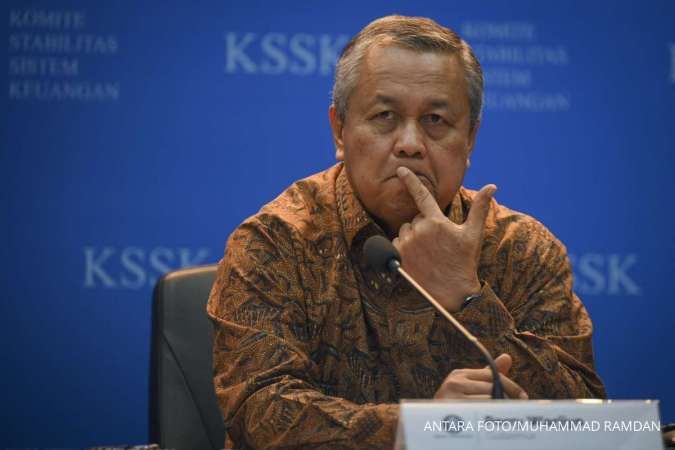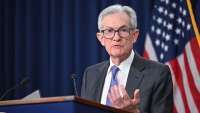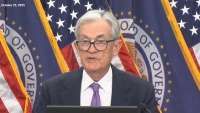Semiannual Monetary Policy Report to the Congress
Chair Jerome H. Powell
(February 11, 2025)
Chairman Scott, Ranking Member Warren, and other members of the Committee, I appreciate the opportunity to present the Federal Reserve's semiannual Monetary Policy Report.
The Federal Reserve remains squarely focused on achieving its dual-mandate goals of maximum employment and stable prices for the benefit of the American people. The economy is strong overall and has made significant progress toward our goals over the past two years. Labor market conditions have cooled from their formerly overheated state and remain solid. Inflation has moved much closer to our 2 percent longer-run goal, though it remains somewhat elevated. We are attentive to the risks on both sides of our mandate.
I will review the current economic situation before turning to monetary policy.
Read Also: EMERGING MARKETS-Currencies and Stocks Broadly Under Pressure after Trump's Tariffs
Current Economic Situation and Outlook
Recent indicators suggest that economic activity has continued to expand at a solid pace. Gross domestic product rose 2.5 percent in 2024, bolstered by resilient consumer spending. Investment in equipment and intangibles appears to have declined in the fourth quarter but was solid for the year overall. Following weakness in the middle of last year, activity in the housing sector seems to have stabilized.
In the labor market, conditions remain solid and appear to have stabilized. Payroll job gains averaged 189,000 per month over the past four months. Following earlier increases, the unemployment rate has been steady since the middle of last year and, at 4 percent in January, remains low. Nominal wage growth has eased over the past year, and the jobs-to-workers gap has narrowed. Overall, a wide set of indicators suggests that conditions in the labor market are broadly in balance. The labor market is not a source of significant inflationary pressures. The strong labor market conditions in recent years have helped narrow long-standing disparities in employment and earnings across demographic groups.1
Inflation has eased significantly over the past two years but remains somewhat elevated relative to our 2 percent longer-run goal. Total personal consumption expenditures (PCE) prices rose 2.6 percent over the 12 months ending in December, and, excluding the volatile food and energy categories, core PCE prices rose 2.8 percent. Longer-term inflation expectations appear to remain well anchored, as reflected in a broad range of surveys of households, businesses, and forecasters, as well as measures from financial markets.
Read Also: Gold at Record, Stocks Mixed as Investors Weigh Trump's Latest Tariff Threat
Monetary Policy
Our monetary policy actions are guided by our dual mandate to promote maximum employment and stable prices for the American people. Since last September, the Federal Open Market Committee (FOMC) lowered the policy rate by a full percentage point from its peak after having maintained the target range for the federal funds rate at 5-1/4 to 5-1/2 percent for 14 months. That recalibration of our policy stance was appropriate in light of the progress on inflation and the cooling in the labor market. Meanwhile, we have continued to reduce our securities holdings.
With our policy stance now significantly less restrictive than it had been and the economy remaining strong, we do not need to be in a hurry to adjust our policy stance. We know that reducing policy restraint too fast or too much could hinder progress on inflation. At the same time, reducing policy restraint too slowly or too little could unduly weaken economic activity and employment. In considering the extent and timing of additional adjustments to the target range for the federal funds rate, the FOMC will assess incoming data, the evolving outlook, and the balance of risks.
As the economy evolves, we will adjust our policy stance in a manner that best promotes our maximum-employment and price-stability goals. If the economy remains strong and inflation does not continue to move sustainably toward 2 percent, we can maintain policy restraint for longer. If the labor market were to weaken unexpectedly or inflation were to fall more quickly than anticipated, we can ease policy accordingly. We are attentive to the risks to both sides of our dual mandate, and policy is well positioned to deal with the risks and uncertainties that we face.
Read Also: Indonesia Turns to Old Tax System after Troubles with New Software
This year, we are conducting the second periodic review of our monetary policy strategy, tools, and communications—the framework used to pursue our congressionally assigned goals of maximum employment and stable prices. The focus of this review is on the FOMC's Statement on Longer-Run Goals and Monetary Policy Strategy, which articulates the Committee's approach to monetary policy, and on the Committee's policy communications tools. The Committee's 2 percent longer-run inflation goal will be retained and will not be a focus of the review.
Our review will include outreach and public events involving a wide range of parties, including Fed Listens events around the country and a research conference in May. We will take on board lessons of the past five years and adapt our approach where appropriate to best serve the American people, to whom we are accountable. We intend to wrap up the review by late summer.
Let me conclude by emphasizing that at the Fed, we will do everything we can to achieve the two goals Congress set for monetary policy—maximum employment and stable prices. We remain committed to supporting maximum employment, bringing inflation sustainably to our 2 percent goal, and keeping longer-term inflation expectations well anchored. Our success in delivering on these goals matters to all Americans. We understand that our actions affect communities, families, and businesses across the country. Everything we do is in service to our public mission.
Thank you. I look forward to your questions.
Read Also: Indonesia Launches $183 Million Free Health Screening to Prevent Early Deaths
/2025/02/11/940949977p.jpg)














